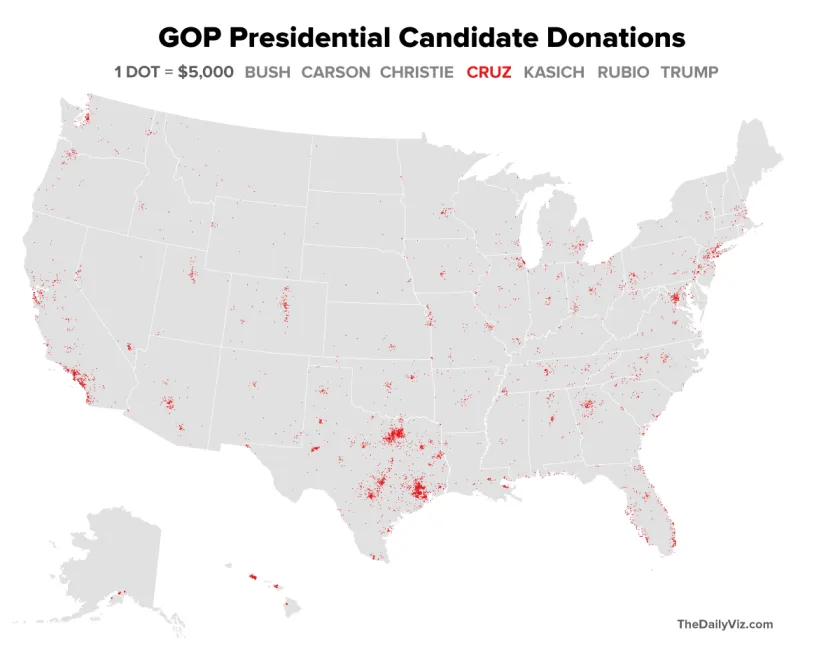Posts tagged "Bush"

Visualizing Historical Political Party Identification in the Era of Trump
As many have noted, President Trump has shown a remarkable ability to maintain a strong base of support — about 40% of the voters — despite the myriad controversies swirling around him....
Read more →

Mapping GOP Campaign Cash by Density
The GOP presidential candidates collectively have raised more than $300 million in this election cycle, according to Federal Election Commission data. Here's a quick look at where several of those candidates...
Read more →

The Nation's Most Consistently Partisan Counties In Presidential Elections
When it comes to recent presidential elections, geography — at least in some stubborn places — is destiny. Voters in more than 1,600 American counties — a little more than half of...
Read more →

Mapping Consistently Partisan Counties
When it comes to recent presidential elections, geography — at least in some stubborn places — is destiny. Voters in more than 1,600 American counties — a little more than half of...
Read more →